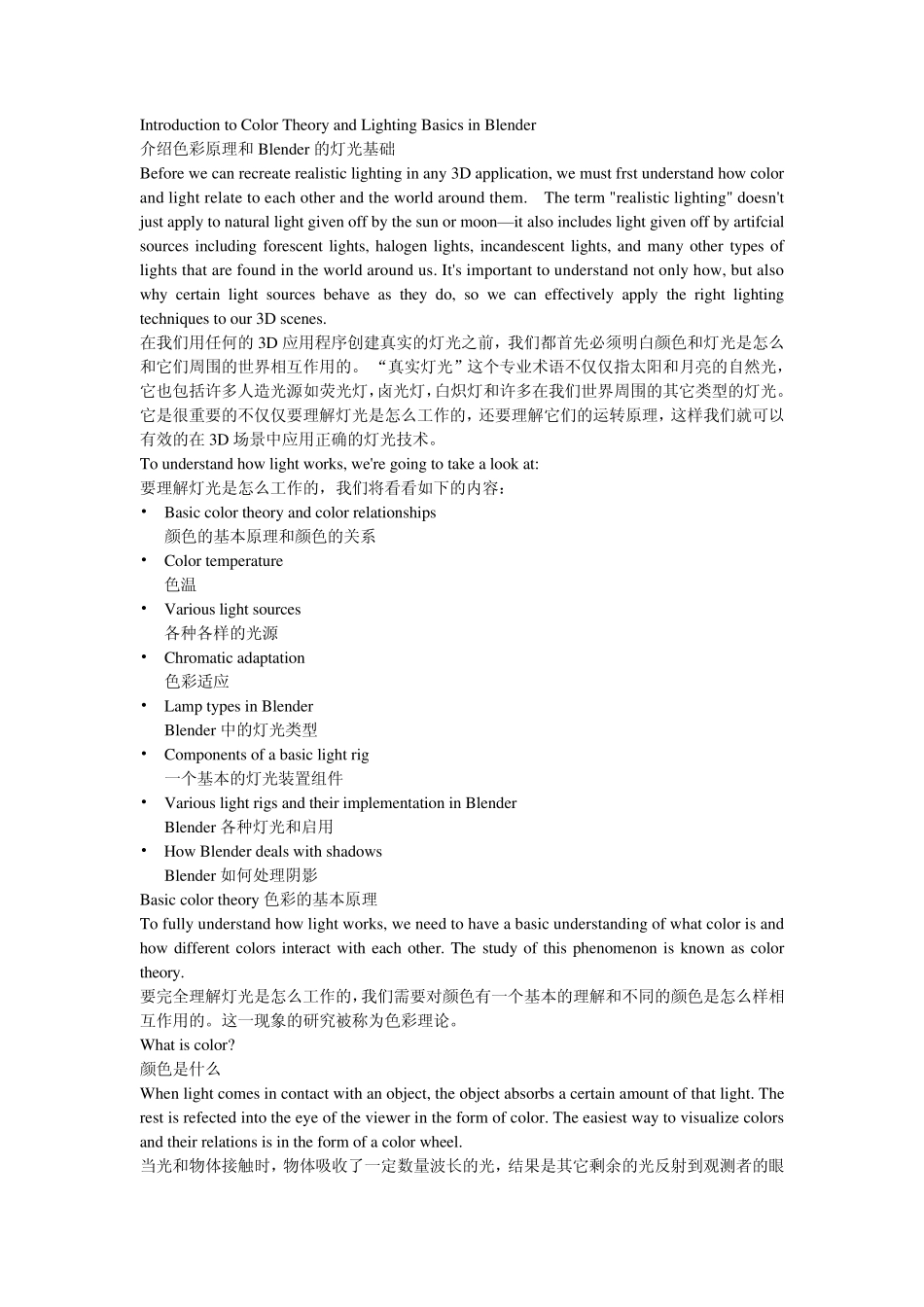Introduction to Color Theory and Lighting Basics in Blender 介绍色彩原理和Blender 的灯光基础 Before we can recreate realistic lighting in any 3D application, we must frst understand how color and light relate to each other and the world around them. The term "realistic lighting" doesn't just apply to natural light given off by the sun or moon—it also includes light given off by artifcial sources including forescent lights, halogen lights, incandescent lights, and many other types of lights that are found in the world around us. It's important to understand not only how, but also why certain light sources behave as they do, so we can effectively apply the right lighting techniques to our 3D scenes. 在我们用任何的3D 应用程序创建真实的灯光之前,我们都首先必须明白颜色和灯光是怎么和它们周围的世界相互作用的。 “真实灯光”这个专业术语不仅仅指太阳和月亮的自然光,它也包括许多人造光源如荧光灯,卤光灯,白炽灯和许多在我们世界周围的其它类型的灯光。它是很重要的不仅仅要理解灯光是怎么工作的,还要理解它们的运转原理,这样我们就可以有效的在3D 场景中应用正确的灯光技术。 To understand how light works, we're going to take a look at: 要理解灯光是怎么工作的,我们将看看如下的内容: • Basic color theory and color relationships 颜色的基本 原理和颜色的关 系 • Color temperature 色温 • Various light sources 各 种 各 样的光源 • Chromatic adaptation 色彩适 应 • Lamp types in Blender Blender 中的灯光类型 • Components of a basic light rig 一 个基本 的灯光装 置 组 件 • Various light rigs and their implementation in Blender Blender 各 种 灯光和启 用 • How Blender deals with shadows Blender 如何处 理阴 影 Basic color theory 色彩的基本 原理 To fully understand how light works, we need to have a basic understanding of what color is and how different colors interact wi...


